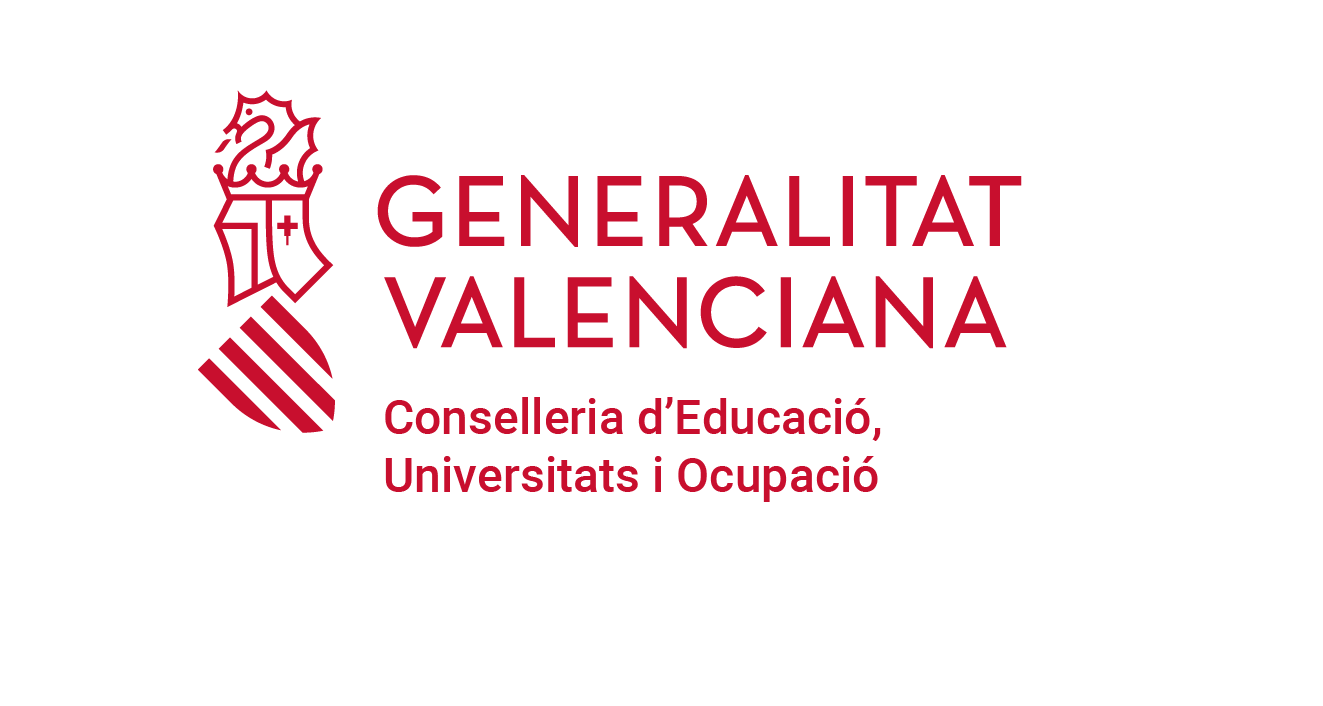
Biography
My research career has addressed the socio-economic challenge of reducing postharvest fruit quality loss caused by biotic and abiotic stresses. During my PhD, I studied the molecular bases of citrus fruit dehydration, its hormonal regulation and its relationship with ripening and the development of peel disorders that depreciate their external quality. The scientific progress is supported by an Extraordinary Thesis Award and 7 SCI publications. During the PhD period and further competitive contracts I was involved in parallel projects dealing with the effects of ethylene on peel damage (PD). Likewise, I studied starvation stress produced after fruit detachment, its hormonal regulation, and its link with phospholipid metabolism and the development of PD. Moreover, I studied the elicitation of resistance against the major pathogen of citrus fruit (Penicillium digitatum) by led blue light and the role of phospholipases in the susceptibility to infection. From my PhD results, two major questions caught my interest and drove my three postdoctoral periods: 1) how the cuticle, the first barrier against dehydration is regulated in response to water stress and how the hormone abscisic acid (ABA) may influence such response, and 2) why/how copper (Cu) homeostasis is involved in the fruit water stress response. Funded by my first MSCA project (3F:FutureFreshFruit), I continued the study of the molecular bases of tomato and citrus fruit resistance to dehydration, considering the cuticle as a key factor. During a 3-year postdoctoral stay, coordinated between USA (Prof. Rose, Cornell University) and Spain (Dr. Lafuente, IATA-CSIC), I acquired great knowledge on cuticle characterization, built important connections for my network of collaborators and improved my CV by 6 SCI publications in which my leadership as corresponding author highly increased. To investigate the second question, I joined Prof. Peñarrubia lab (University of Valencia) after obtaining through competitive call a Junior Postdoctoral contract. During a 1-year postdoctoral stay, I studied the interconnection between Cu transport and hormone and stress signaling in model plant. This collaboration set the basis for my second MSCA project (TOMACOPT). This two-year postdoctoral stay dealt with the effects of Cu-deficiency on tomato fruit quality. Recently, I obtained a competitive CSIC project (MSCA-ERC-CSIC, PI) that set a bridge between my last MSCA project and my ERC-CoG proposal. Currently, I have been granted with a highly competitive project (ABACus, PlanGenT-GVA) by which I am studying how Cu deficiency may influence tomato postharvest quality and its relation with the nutritional value and cuticle properties. With these projects I have opened a new research line within the Postharvest Physiology, Biotechnology and Pathology group at the IATA-CSIC aiming to provide innovative solutions to problems facing European agriculture (i.e. Cu deficiency and water stress) by transforming their deleterious effects into a sustainable benefit for food quality and safety, and hence for human health (Postharvest Physiology and Biotechnology for Food Sustainability, PPB4FS Lab).
Projects


Publications
1. P. Romero, M.J. Rodrigo, F. Alférez, A.R. Ballester, L. González-Candelas, L. Zacarías, M.T. Lafuente*. 2012. Unravelling molecular responses to moderate dehydration in harvested fruit of sweet orange (Citrus sinensis L. Osbeck) using a fruit-specific ABA-deficient mutant. Journal of Experimental Botany 63, 2753-2767. JCR 2012: 5.24 (13/197 Plant Sciences, D1). DOI: 10.1093/jxb/err461.
2. P. Romero, M.T. Lafuente, M.J. Rodrigo*. 2012. The Citrus ABA-signalosome: Identification and transcriptional regulation during sweet orange fruit ripening and leaf dehydration. Journal of Experimental Botany 63, 4931-4945. JCR 2012: 5.24 (13/197 Plant Sciences, D1). DOI: 10.1093/jxb/ers168.
3. P. Romero, M.J. Rodrigo, M.T. Lafuente*. 2013. Differential expression of the Citrus sinensis ABA perception system genes in the postharvest fruit dehydration. Postharvest Biology Technology, 76: 65-73. JCR 2013: 2.26 (12/79 Horticulture, Q1). DOI: 10.1016/j.postharvbio.2012.09.010.
4. P. Romero, M. Gandía, F. Alférez*. 2013. Interplay between ABA and phospholipases A2 and D in the response of citrus fruit to postharvest dehydration. Plant Physiology and Biochemistry, 70: 287-294. JCR 2014: 2.75 (59/199 Plant Sciences, Q2). DOI: 10.1016/j.plaphy.2013.06.002.
5. P. Romero, M.T. Lafuente, F. Alférez*. 2014. A transcriptional approach to unravel the connection between phospholipases A2 and D and ABA signal in citrus under water stress. Plant Physiology and Biochemistry, 80: 23-32. JCR 2014: 2.76 (44/204 Plant Sciences, Q1). DOI: 10.1016/j.plaphy.2014.03.014.
6. M.T. Lafuente*, F. Alférez, P. Romero. 2014. Postharvest ethylene conditioning as a tool to reduce quality loss of stored mature sweet oranges. Postharvest Biology Technology, 94: 104-111. JCR 2014: 2.22 (4/33 Horticulture, Q1). DOI: 10.1016/j.postharvbio.2014.03.011.7. S. Vicente-Muñoz, P. Romero, L. Magraner-Pardo, V. Tordera, M. Pamblanco*. 2014. Comprehensive analysis of interacting proteins and genome-wide location studies of the Sas3-dependent NuA3 histone acetyltransferase complex. FEBS OpenBio, 4: 996–1006. JCR 2014: 2.143 (197/286 Biochemistry and Molecular Biology, Q3). DOI: 10.1016/j.fob.2014.11.001.
8. L. Peñarrubia*, P. Romero, A. Carrió-Seguí, A. Andrés-Bordería, J. Moreno, A. Sanz. 2015. Temporal aspects of copper homeostasis and its crosstalk with hormones. Frontiers in Plant Science, 6: 255. JCR 2015: 4.495 (15/209 Plant Sciences, D1). DOI: 10.3389/fpls.2015.00255.
9. B. Establés-Ortiz, P. Romero, A.R. Ballester, L. González-Candelas, M.T. Lafuente*. 2016. Inhibiting ethylene perception with 1-methylcyclopropene triggers molecular responses aimed to cope with cell toxicity and increased respiration in citrus fruits. Plant Physiology and Biochemistry, 103: 154-166. JCR 2016: 2.72 (49/210 Plant Sciences, Q1). DOI: 10.1016/j.plaphy.2016.02.036.
10. A. Carrió-Seguí†, P. Romero†, A. Sanz, L. Peñarrubia*. 2016. Interaction between ABA signaling and copper homeostasis in Arabidopsis thaliana. Plant Cell Physiology, 57: 1568-1582. JCR 2016: 4.76 (16/211 Plant Sciences, D1). DOI: 10.1093/pcp/pcw087.
11. L.B.B. Martin, P. Romero, E.A. Fich, D. Domozych, J.K.C. Rose*. 2017. Cuticle biosynthesis is developmentally regulated by abscisic acid in tomato leaves but not in fruit. Plant Physiology, 174: 1384-1398. JCR 2016: 6.46 (11/211 Plant Sciences, D1). DOI: 10.1104/pp.17.00387.
12. A. Carrió-Seguí, P. Romero, C. Curie, S. Mari, L. Peñarrubia*. 2019. Copper transporter COPT5 participates in the crosstalk between vacuolar copper and iron pools mobilisation. Scientific Reports, 9: 4648. JCR 2018: 4.01 (11/69 Multidisciplinary Sciences, Q1). DOI:10.1038/s41598-018-38005-4.13. P. Romero, J.K.C. Rose*. 2019. A relationship between tomato fruit softening, cuticle properties and water availability. Food Chemistry, 295: 300-310. JCR 2018: 5.39 (6/135 Food Science and Technology, D1). DOI: 10.1016/j.foodchem.2019.05.118.
14. P. Romero, M.T. Lafuente and M.J. Rodrigo*. 2019. A sweet orange mutant impaired in carotenoid biosynthesis and reduced ABA levels results in altered molecular responses along peel ripening. Scientific Reports, 9: 9813. JCR 2018: 4.01 (11/69 Multidisciplinary Sciences, Q1). DOI: 10.1038/s41598-019-46365-8.
15. P. Romero, F. Alférez, B. Establés-Ortiz, M.T. Lafuente*. 2020. Insights into the regulation of molecular mechanisms involved in energy shortage in detached citrus fruits. Scientific Reports 10: 1109. JCR 2019: 3.99 (17/71 Multidisciplinary Sciences, Q1). DOI: 10.1038/s41598-019-57012-7.
16. P. Romero, F. Alférez, M.T. Lafuente*. 2020. Involvement of phospholipases and sucrose in carbon starvation-induced nonchilling peel pitting in citrus fruit. Postharvest Biology Technology, 169: 111295. JCR2019: 4.30 (3/36 Horticulture, D1). DOI: 10.1016/j.postharvbio.2020.111295.
17. P. Romero*, M.T. Lafuente. 2020. Abscisic acid deficiency alters epicuticular wax metabolism and morphology that leads to increased cuticle permeability during sweet orange (Citrus sinensis) fruit ripening. Frontiers in Plant Science, 11: 1914. JCR 2019: 4.40 (19/234 Plant Sciences, D1). DOI: 10.3389/fpls.2020.594184.
18. M.T. Lafuente*, P. Romero, AR Ballester. 2021. Coordinated activation of metabolic pathways induced by LED blue light in citrus fruits. Food Chemistry, 341 (1): 128050. JCR 2021: 9.23 (8/143 Food Science and Technology, D1). DOI: 10.1016/j.foodchem.2020.128050.19. M.T. Lafuente*, A.R. Ballester, N. Holland, J. Cerveró, P. Romero. 2021. Interrelation between ABA and phospholipases D, C and A2 in early responses of citrus fruit to Penicillium digitatum infection. Postharvest Biology and Technology, 175: 111475. JCR 2021: 6.75 (2/36 Horticulture, D1). DOI: 10.1016/j.postharvbio.2021.111475.
20. M.T. Lafuente*, P. Romero, L. González-Candelas. 2021. Albedo- and flavedo-specific transcriptome profiling related to Penicillium digitatum infection in citrus fruit. Foods, 10: 2196. JCR 2021: 5.56 (35/143 Food Science and Technology, Q1). DOI: 10.3390/foods10092196.
21. P. Romero, M.T. Lafuente, F. Alférez*. 2021. Differential transcriptomic regulation in sweet orange fruit (Citrus sinensis L. Osbeck) following dehydration and rehydration conditions leading to peel damage. Frontiers in Plant Science, 12: 732821. JCR 2021: 6.63 (20/238 Plant Sciences, D1). DOI: 10.3389/fpls.2021.732821.
22. P. Romero*†, A. Gabrielli†, R. Sampedro, A. Perea-García, S. Puig, M.T. Lafuente. 2021. Identification and molecular characterization of the high-affinity copper transporters family in Solanum lycopersicum. International Journal of Biological Macromolecules 192: 600-610. JCR 2021: 8.03 (6/90 Polymer Science, D1). DOI: 10.1016/j.ijbiomac.2021.10.032.
23. P. Romero*, M.T. Lafuente. 2021. The combination of abscisic acid (ABA) and water stress regulates the epicuticular wax metabolism and cuticle properties of detached citrus fruit. International Journal of Molecular Sciences, 22(19): 10242. JCR 2021: 6.21 (69/296 Biochemistry and Molecular Biology, Q1). DOI: 10.3390/ijms221910242.
24. P. Romero*, M.T. Lafuente. 2022. Relative humidity regimes modify epicuticular wax metabolism and fruit properties during Navelate orange conservation in an ABA-dependent manner. Food Chemistry, 369: 130946. JCR 2021: 9.23 (8/143 Food Science and Technology, D1). DOI: 10.1016/j.foodchem.2021.130946.25. P. Romero*, M.T. Lafuente. 2022. Ethylene-driven changes in epicuticular wax metabolism in citrus fruit. Food Chemistry, 372: 131320. JCR 2021: 9.23 (8/143 Food Science and Technology, D1). DOI: 10.1016/j.foodchem.2021.131320.
26. M.T. Lafuente*, P. Romero. 2022. Hormone profiling and heat-induced tolerance to cold stress in citrus fruit. Postharvest Biology and Technology, 194: 112088. JCR 2021: 6.75 (2/36 Horticulture, D1). DOI: 10.1016/j.postharvbio.2022.112088.
27. M.T. Lafuente, R. Sampedro, D. Vélez, P. Romero*. 2023. Deficient copper availability on organoleptic and nutritional quality of tomato fruit. Plant Science, 326: 111537. JCR 2021: 5.36 (29/239 Plant Science, Q1). DOI: 10.1016/j.plantsci.2022.111537.
28. M.T. Lafuente*, R. Sampedro, P. Romero. 2023. Transcriptional regulation of jasmonate metabolism and signaling by thermal stress and heat-induced chilling tolerance in ‘Fortune’ mandarin. Postharvest Biology and Technology. JCR 2021: 6.75 (2/36 Horticulture, D1). DOI: 10.1016/j.postharvbio.2023.112399.
29. P. Romero*, M.T. Lafuente. 2023. Molecular responses of red ripe tomato fruit to copper deficiency stress. Plants, 12 (10): 2062. JCR 2021: 4.66 (39/239 Plant Sciences, Q1). DOI: 10.3390/plants12102062.



